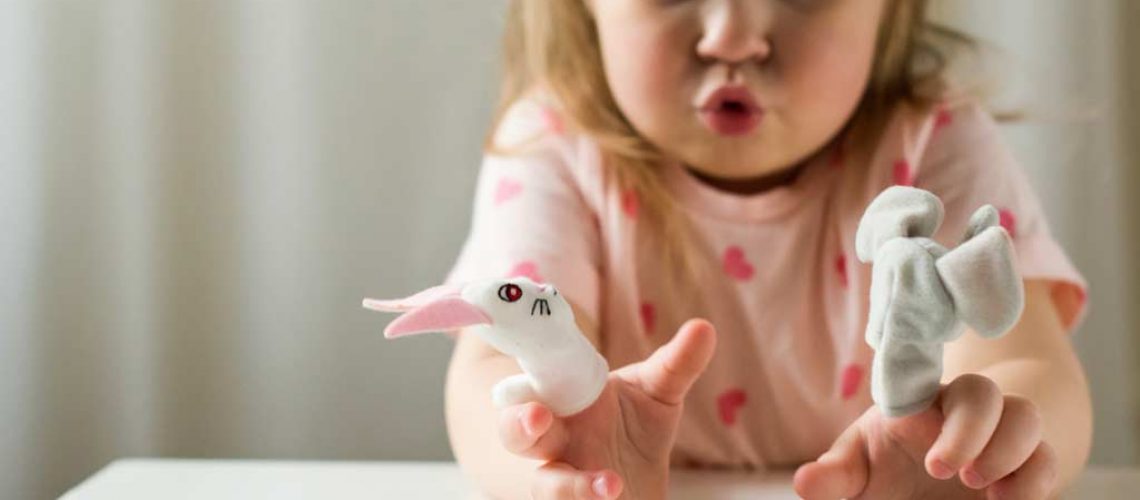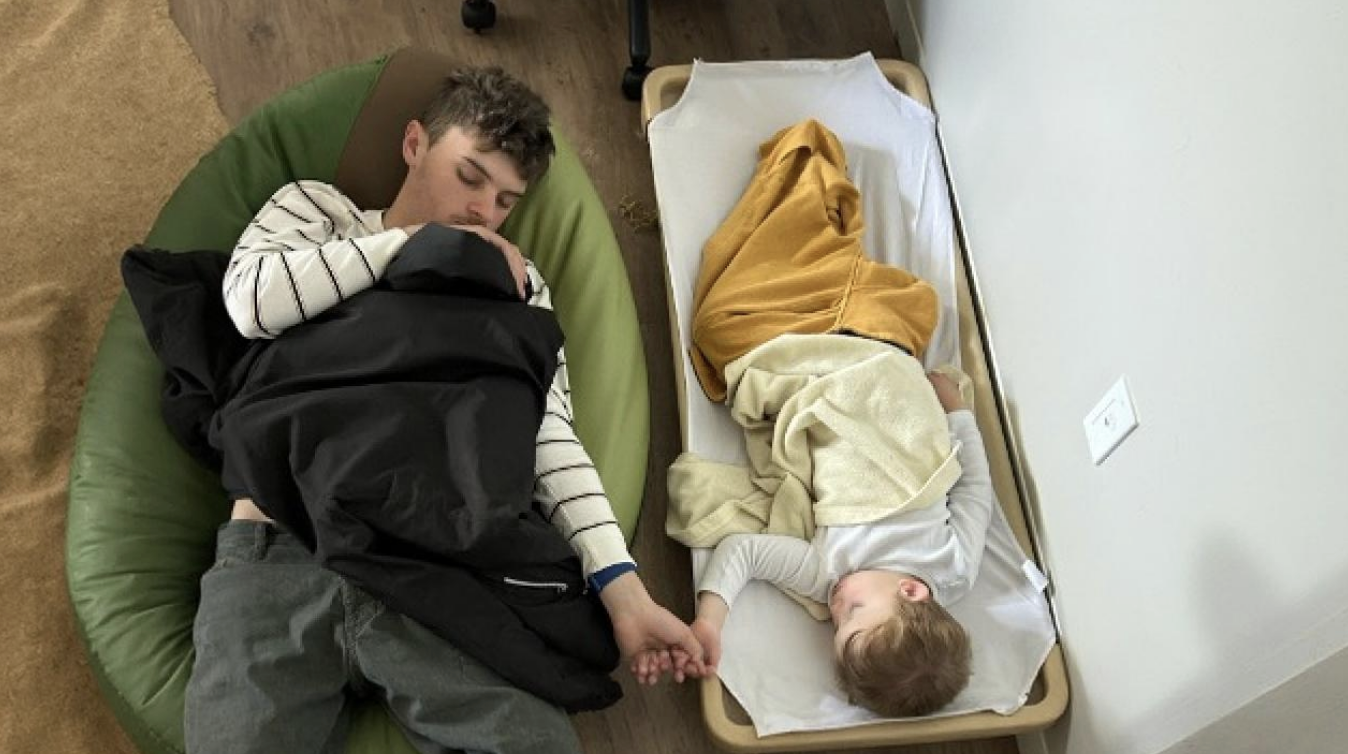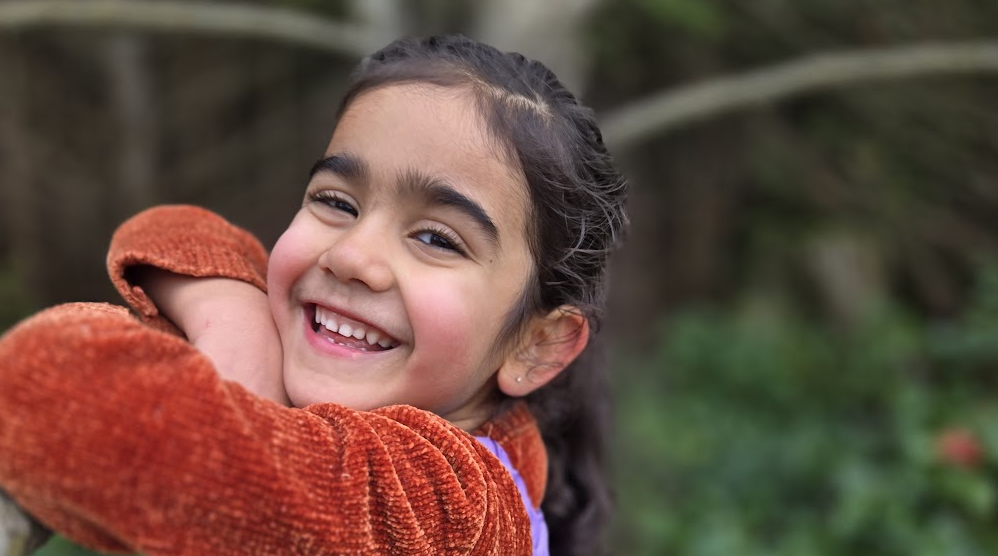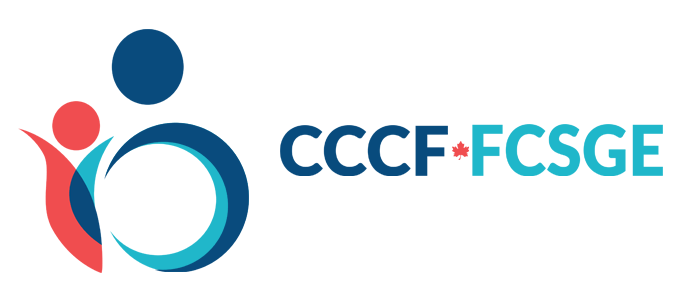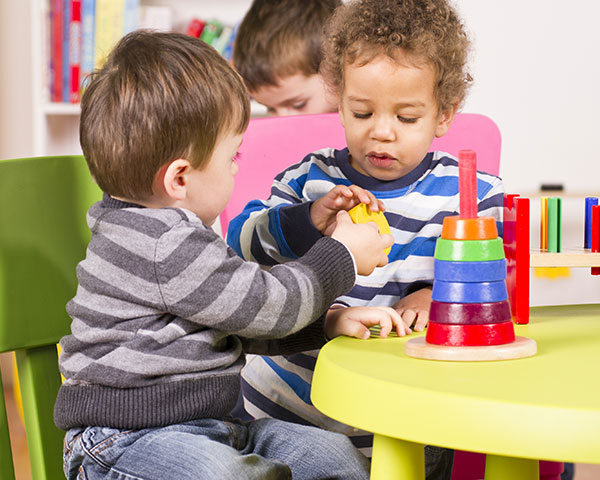By Gillian Hazan, Nathan Millar, Susan Garrow-Oliver
Practising Applied Puppetry as a Pedagogy for play based learning
The Mount Royal University Child Studies program partnered with WP Puppet Theatre Society [WPTS] to undertake a Capstone project during the 2021/2022 semesters. Students from both the Early Learning and Child Care (ELCC), and Child and Youth Care Counseling (CYCC) majors collaborated with representatives from WPTS to create a number of projects. The capstone course provided students the opportunity to integrate theory and knowledge from the first three years of the degree into practices with the community partner. This paper will illustrate how applied puppetry can be connected to professional practice, by identifying unique ways to practise this pedagogy within the early learning professional framework. Applied puppetry will be defined, and this approach synthesized with relevant theories and modalities of the many environments that ELCC professionals work in. By integrating applied puppetry as a tool, we argue that it holds the potential to support children’s holistic growth and development.
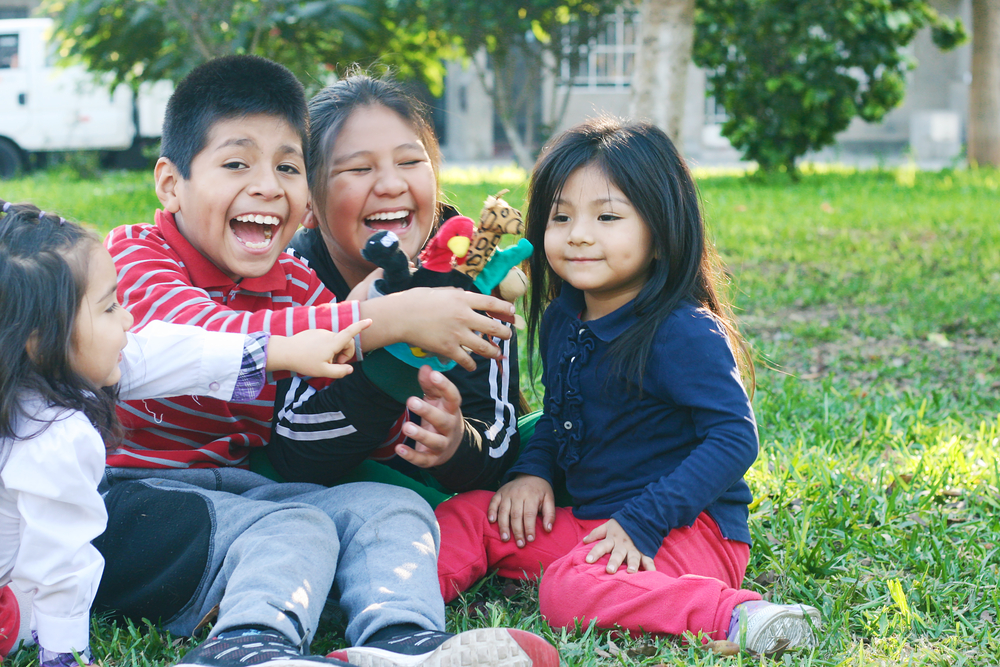
The Scope of Applied Puppetry
Puppetry is the act of animating the inanimate. Any found object could be used as a puppet. This is done by conceiving a character and channeling the unique movements and voice of the character to the object (W. Passmore-Godfrey, personal communication, October, 2021). Alternatively, a group of Sesame Street puppets that are articulated, crafted and sewn to perfection will achieve the same purpose – being used as puppets that tell a meaningful story. The term applied puppetry can be understood as an approach for engaging a community through the use of puppetry (Smith, 2015). Puppetry can be used in education and therapy (Smith, 2015, p. 531), to “modify social practices” (Kruger, M. 2010, p. 316), or to “challenge customary concepts and beliefs” (p. 317). Applied puppetry also exists as a form of social activism and awareness that holds potential for the expression of the creative self.
In a global context, puppets have been uniquely engaged to educate larger populations. A documented example included the voting process during the first democratic election of South Africa in 1994 (Friedman, 2021a). The colours of the puppets were blue and red so as not to evoke racial reactions, their message was perceived without bias in a racially divided country (Friedman, 2021a). In explaining his work, Friedman (2021b) says “puppetry breaks down barriers… you can get away with saying so much more with puppets” (0:02:48). These puppets utilized minimal spoken language to convey their message (Friedman, 2021b), serving as a non-verbal communicative medium, relating the message in a way that transcended language barriers – something needed in a country with eleven official languages. This implies that puppets, through anonymity, can allow for some degree of freedom to express more controversial, and sensitive subject matter. Another example is the island of Java where puppetry is used for entertainment, and for communicating social beliefs and political ideologies (Basuki, 2006 in Romanski, 2019). Narrative puppet performances can be used to take a stand for social justice, create herstory performances, change the narrative of historical stories and retell ancient myths or folktale through a more contemporary lens (Romanski, 2019). We see puppets used to introduce and bring awareness to environmental issues and sustainable resources as a way for children to see themselves belonging to the global community as democratic citizens.
The pandemic over the last two years has heightened the importance of teaching health and wellness to children, and puppetry has been used as a means of community education. For example, Kahkakiw has used applied puppetry to educate children in Indigenous communities about COVID-19 through a Cree-speaking puppet. Kahkakiw, which means ‘raven’ in Cree, was created by a Manitoba man named Hunter Samson, who saw the importance of teaching children through their language (Kitatipithitamik Mithwayawin, 2020). Another Indigenous artist and professional puppeteer, DerRic Starlight, has used puppets to educate communities in southern Alberta about the importance of COVID-19 safety and vaccines in a fun and engaging way (Dhaliwal, 2020). Starlight refers to his puppets as “nuppets,” abbreviating the term native puppets (Dhaliwal, 2020) and adds a comedic dimension to his message.
Puppets have been a part of early childhood educator practice and in formal therapy settings for many years. They can be used as a tool to observe, educate, and support children. Often puppets are placed in the dramatic play area or are used by educators to assist in storytelling, group times and in helping to label and express feelings. Through puppets children are provided with an opportunity to express their fears, anxieties, and emotions. For some, the use of puppets has been a way to integrate curriculum and play as a part of learning and can be used to simulate real life scenarios. Exploring puppetry, puppeteers and the making of puppets is also another avenue worth discovering with children in the playroom. Children create their own understanding and images of the world through play, while engaging in fantasy play and role play that allows children the freedom of expression. Children love to pretend and engage in dramatic characterizations, using puppets that can help foster social, emotional, cognitive, spiritual and literacy development. It also promotes storytelling abilities, creative thinking, problem solving and nurturing self-esteem (Synovitz, 1999).
Applied puppetry has been used in the healthcare field such as hospitals to assist in treatment and surgery preparation. Health care professionals have used puppets to assist in teaching about healthy food choices. A study looked at how interactive reading and puppetry could promote a toddler’s vegetable consumption. In their study, deRong et al. (2017) found that the puppets acted as role models that influenced the children’s eating habits by imitating the puppets actions. A book was used together with the puppet to support the ideas. The puppet asked children questions and responded to their actions demonstrating that the children responded more to the characters than just to a story or book being shared. Children were encouraged to feed the puppet pretend vegetables which had them actively engaged, as opposed to being passive participants in the learning (listening to a story).
Children love to pretend and engage in dramatic characterizations, using puppets that can help foster social, emotional, cognitive, spiritual and literacy development. It also promotes storytelling abilities, creative thinking, problem solving and nurturing self-esteem
(Synovitz, 1999).
The physical motion of using puppets also strengthens other areas of development such as cognitive competence and physical coordination. In their work Liang et al. went further in exploring puppetry through technology which used multi-touch tablets for collaborative, interactive and immersive storytelling experiences. As children engage in the puppet narrator role their development is supported through thinking about and telling stories, understanding the meaning of stories, creating, and identifying a plot in the story process, learning about numbers, spacial awareness and visual perception; together with eye hand coordination needed for hand gestures and movements (Liang et al., 2017).
Applied Puppetry to Support Emotional and Self-Regulation
Some young children find it a challenge to generate strategies to regulate their anger, sadness and other emotions, and early childhood educators must find creative, safe and respectful ways to support children in their emotional and social development. Throughout their preschool age years children begin to respond to experiences with different emotions and reactions.
In a presentation to the Child Studies program in the winter semester of 2022, Starlight related that puppetry helped him to build his own resilience as a young man. He talked about how it was a tool for him in different scenarios in that it helped him to resolve conflict with peers and to connect with his family (D. Starlight, personal communication, February 14, 2022). Children can use puppets to help gain a sense of control when interacting with puppets which helps them in making good decisions. Caring adults will encourage children to use language, when possible, to deal with stress together with emotional support in the form of soothing, positive emotional expression, and affection. Through this, children learn that emotions can be managed through strategies, however, how the child responds is also dependent on dispositions and temperament. Children can project their thoughts, feelings, and experience onto puppets because it can be a safe place to communicate worries and distress. Children can also interact with the puppets to understand potential thoughts and feelings of the puppet. Puppets can be used to talk with children about their worries and emotions while perhaps sharing its’ own stories of difficult situations, such as experiences with moving to a new country, violence, or other traumas. Children can relate to puppets who share experiences like their own and may feel more comfortable while in programs. A fun and trusted puppet friend does not come across as threatening and can help increase a sense of safety, warmth, and comfort.
This absence of threat is very important when encouraging children to take risks. Children can first get comfortable performing an unfamiliar or challenging task through the puppet, before they feel confident to perform it themselves. This can be illustrated when children who have English as a second language will be more comfortable speaking English through the puppet before they are ready to articulate the words by themselves. Children who are sensory sensitive and therefore hesitant to engage with art materials can practice those activities using a puppet.
Applied Puppetry and Equity, Diversity and Inclusive practices
“Research shows that young children notice racial differences, construct racial categories and make racial evaluation” (p.74) and by the age of three have already internalized racial biases (Beneke, Park & Taitinfong, 2019). Social justice, equity, inclusion, and anti-biased approaches to early childhood education can happen through applied puppetry, thus leading to diverse and culturally safe spaces. Children with diverse needs can use puppets to say things through the puppet or act out feelings. Storytelling can be used as a method to teach ethics, values, and cultural norms and differences while helping to nurture peer relationships. It helps to remove barriers of communication and overcome the inability to focus on feelings and thoughts by providing them with opportunities in play active roles (Liang et al., 2017).
We are learning more about the importance of race, culture, and gender identity as a part of our approaches to programming and practice. These can be difficult topics for educators to bring into their playrooms and everyday conversations, but they are necessary as “young children will not have strategies for interrupting racism if we do not teach them to recognize it” (Beneke et al, 2019, p.75). Race, gender, and cultural stereotypes contribute to inequality and limit the potential of individuals and groups. Puppets and toys were found to help embody empathy and can address issues related to gender identity, democracy and governance, and human rights. “Puppets can offer ways to communicate the construct of gender to children” (Bantugan, 2022, p.17). Puppets are often gender neutral so making them more accessible, mainstream, representative of different race, abilities, culture and promoted early on, can help in understanding gender identity, and further racial and cultural conversations as a form of communication tool for education and social change.
Through applied puppetry children can learn about different cultures, languages, careers, differing abilities, race, gender identity and roles and other marginalized groups. Puppets that represent a diversity of groups can also help children see themselves in others thus assisting in a stronger sense of identity and pride in their upbringing, beliefs, and values. Anti-bias education must be an ongoing process of observation, critical reflection and action, and educators can place themselves as co-learners alongside children and families (Beneke et al. 2019).
Conclusion
Early childhood education is practiced with a foundation of a practice of relationships, responsive environments, reflexive practice, culturally safe, meaningful, and purposeful planning, and an image of the child who is a capable democratic citizen. Applied puppetry can contribute to children’s growth and learning as they support children’s dispositions to learn through being playful, curious, persistent, and participatory. As educators focus on co-learning and co-constructing respectful and safe spaces, the use of puppets can enhance educator practice with holistic play-based goals. Puppets can help facilitate practice that demonstrates equity, diversity, inclusion, democratic citizenships, cultural safety and environmental sustainability. Puppets can also be used to assist in learning processes that honor and value diverse learning, multimodal literacies, collaboration and interconnectedness, creativity, reciprocity, and community.
*a similar article was submitted to CYC net and includes some of the general information about puppetry. However the content and application was then relevant to Child and Youth Care Counseling (CYCC) practice.
Applied Puppetry as a Pedagogy for Early Learning and Child Care
References
Beneke, M. Park, C., & Taitingfong, J. (2019). An inclusive, anti-bias framework for teaching and learning about race with young children. Young Exceptional Children, 22(2), 74–86. https://doi.org/10.1177/1096250618811842
Bantugan, B. (2022). Exploring relationships between toys, dolls, and puppets in gender education web-series projects in development communication. International Journal of Arts and Social Science 5(2). https://www.ijassjournal.com/2022/V5I2/414659922.pdf
deDrong, S., van Nee, R., Govers,M., & Buijzen, M. (2017). Promoting toddlers’ vegetable consumption through interactive reading and puppetry. Elsevier Ltd. 116(1). https://doi.org/10.1016/j.appet.2017.04.022
Friedman, G. (2021a). Puppets for democracy. Retrieved from https://www.garyfriedmanproductions.com/puppets-democracy.html
Friedman, G. (2021b). About [Video]. Retrieved from https://www.garyfriedmanproductions.com/about.html
Kitatipithitamak Mithwayawin (2020). Kahkakiw. Indigenous-led Countermeasures to Coronavirus (Covid 19) and Other Pandemics. Then, Now, and Into the Future. https://covid19indigenous.ca/957-2/
Kruger, M. (2010). Social Dynamics in African Puppetry. Contemporary Theatre Review. 20(3). (pp. 316–328).https://doi.org/10.1080/10486801.2010.488843
Liang, H., Chang, J., Kasmi, I., Zhang, J., & Jiao, P. (2017). Hand gesture-based interactive puppetry systems to assist storytelling for children. The Visual Computer 33(4). DOI 10.1007/s00371-016-1272-6
Romanski, N. (2019). Reigniting the transformative power of puppets through narrative pedagogy, contemporary art, and transdisciplinary approaches in art education. Art Education 72(4). http://dx.doi.org/10.1080/00043125.2019.1602496
Smith, M. (2015). The practice of applied puppetry: antecedents and tropes. Research in Drama Education: The Journal of Applied Theatre and Performance, 20(4). (pp. 531-536). DOI: 10.1080/13569783.2015.1073581
Synovitz, L. (1999) Using puppetry in a coordinated school health program. Journal of School Health 69(4).
Author Bios:
Gillian Hazan: Gillian is a new graduate of the Bachelor of Child Studies program at Mount Royal University, majoring in early learning and childcare. She is a dedicated wife and mother and shares her passion for making a positive difference in the lives of children and families in her role as an early childhood educator in the early learning profession for many years.
Nathan Millar:Nathan Millar is an artist and recent graduate of the Bachelor of Child Studies program at Mount Royal University, with a major in Child and Youth Care Counselling. He has worked as a Child and Youth Care Counsellor in varying roles for 20 years. Nathan participated in an extensive Capstone Project, as well as a practicum with WP Puppet Theatre, looking at the efficacy of applied puppetry within the professional context. In addition to emerging interests around the use of puppetry in counselling, Nathan illustrates and colors independent comics, and works as a Research Assistant at Mount Royal University in Calgary, Alberta, studying vicarious trauma.
Dr. Susan Garrow-Oliver is a full-time faculty member at Mount Royal University in the Bachelor of Child Studies degree. Susan was the faculty member connected to this unique capstone project and worked closely with the agency partner and students during the winter 2022 semester. Susan has been connected to the profession of early learning for 30 years and enjoys her role as a co-learner and co-imaginer of possibilities with peer, students and educators.


